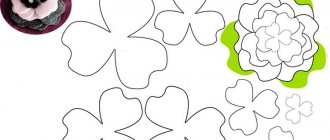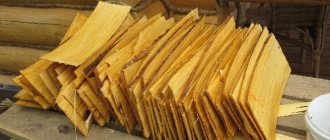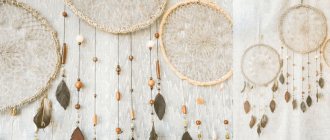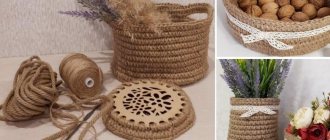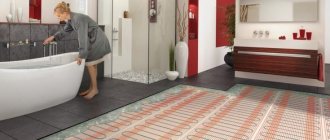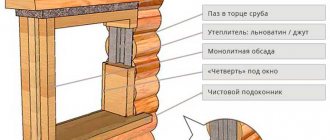We are planning a place for a vegetable garden.
Smart vegetable garden design begins with thoughtful planning. You must decide what size your garden will be, what vegetables you will grow in it, where your beds will be located.
Your vegetable garden will not always be large; more and more summer residents are leaning towards a small vegetable garden, which takes its rightful place in the overall landscape design of the garden.
Do-it-yourself warm bed
Having previously sampled 40-50 cm of soil, we lay the layers in the following sequence.
Such a bed uses not ordinary soil as soil, but compost, to which straw, leaves and sawdust are added, which as a result provides even more useful substances for future plants.
- Large wood
- Small wood
- Earth
- Organic - waste
- Sprinkle EM-Bokashi, spill EM-A
- Earth again
- Organic - waste
- Sprinkle EM-Bokashi, spill EM-A
- Humus
- Mulch (5-8 cm)
The service life of such a bed is 6-8 years.
See alsoModern landscape design. Main trends
Vegetable garden design - let your vegetable garden be beautiful.
When most people hear the word “garden,” they think of long, boring beds of vegetables. But this shouldn't be your only garden design option.
You can make your garden so that it is as beautiful as your flower beds.
A little advice. It makes sense to test a new form of vegetable garden, invented on paper, in the first year. Life can make its own adjustments to the shape of the beds and their number.
Smart beds
The main principle in smart beds remains the same as in lazy ones, but the emphasis is on fertilizers. The quantity of the harvest and how carefully it will be necessary to care for it directly depend on their quality.
Smart beds only need to be dug up once. They do not need weeding - mulch will prevent weeds from sprouting.
The soil in them is compost, consisting of straw, leaves and sawdust containing nutrients. A thin layer of soil is laid on top of it, and after a couple of weeks the bed can be planted.
See also: DIY garden decor
Record your garden design on paper.
Even a small vegetable garden requires careful planning.
Having a pre-designed garden design on paper will help you analyze the effectiveness of your design for the current season and plan new plant combinations and new beds for future seasons.
Make comfortable beds.
Be sure to clearly demarcate each area of your garden. This will not only give it a neater look, but will also help you plan your plantings for the next step.
The clear geometric contours of the garden bed, even in a small space, create a visual accent in the landscape design, while creating a feeling of order and cleanliness.
If the soil on your property is not ideal, raised beds are the easiest way to solve this problem. Vegetables do surprisingly well in this modern setting.
Raised beds require an investment of time and effort, but it will all come back a hundredfold when you realize that your back no longer hurts after the next weeding. Of course, it is not necessary to raise the entire garden above the ground.
Save raised beds for the kitchen herb garden and those crops that require the most care. This way your energy will be spent with maximum efficiency.
Avoid making the beds wide. You must have good access to process them.
But long ones are welcome. The main thing is that you can freely reach the middle while standing on the path.
Try different garden design options and choose what suits you.
Beauty and practicality
The possibilities of garden design today are simply inexhaustible. Having even a small area of free space, not occupied by trees and buildings, you can endlessly experiment and “play” with the shape, size, height and relative position of elements in relation to each other. Moreover, each individual design element, that is, a garden bed, can carry not only aesthetic, but also quite significant utilitarian significance.
The shape of the beds can be of completely different configurations: round, oval, square, rectangular, triangular, multifaceted, fancy with smooth edges. From such geometric shapes located in the same plane, you can create an infinite number of design variations, just as colored fragments are added each time into a new pattern in a kaleidoscope. Playing with size will also help spur your imagination. Large and small areas, limited by the border, can be interspersed and alternated, creating a play of rhythm and volume.
You can experiment not only with shape and size, but also with position in space. The beds can be located in the plane:
- horizontally;
- vertical;
- obliquely (cascade);
- a combination of several options.
The combined layout of objects is especially interesting . In addition to the fact that this arrangement creates an unexpected visual effect, it also allows you to significantly save space, and this is always important for a summer resident. As a result, on an area of literally a few square meters, using cascading or vertical structures, you can arrange much more garden plants than with the traditional layout of a garden in one plane at ground level. It is practical, and if you use your imagination, it is also very beautiful and unusual.
Landscape design of beds involves not only playing with shape and size, but also a certain way of designing objects. The beds can be enclosed in neat wooden boxes , decorated with decorative stones similar to an alpine slide, or simply sprinkled with a border of gravel, tree bark, sand or other natural materials. It is very convenient to provide a design so that each bed has a small area, convenient for cultivation on all sides and is surrounded by a path around the perimeter for easy access, watering and caring for plants.
Unusual garden design options.
If you don't have much space on your yard or aren't planning a full-scale vegetable garden, you can create custom garden beds almost anywhere in your garden. Try replacing a small flowerbed with a bed with various types of greens and tomatoes.
And this miniature vegetable garden looks very impressive due to its location.
And this one helps you grow more crops per square meter.
Creating lazy beds
The creation of such beds allows you to reduce weeding, increase productivity, and such beds will also allow you to increase the time for rest.
To create such beds, you need to make a box or rectangle from boards tightly packed together. Instead of wood, you can use building materials such as slate, sheets of metal and even permanent beds made of brick.
The size of such beds can be almost any, the main thing is that the plants in such beds are not crowded and they should be positioned so that they receive maximum sunlight during the day.
From the inside of the knocked together frame, scraps of PVC pipes are attached, in the corners of the structure, as well as in several places along the long side of such ridges. The ends of such pipes should protrude slightly beyond the top edge of the boards. Subsequently, these trimmings will serve to insert arches onto which the covering material will be stretched, if necessary.
The boxes are installed on the site in a pre-selected place; it is recommended to lay a fine-mesh metal mesh on the bottom of such beds, which in some cases can protect the plantings from rodents. Soil is poured inside such beds of boxes and after filling the boxes, plants are planted.
In the summer, such beds need to be watered almost every day in the morning or evening, especially in the heat. To facilitate this task, you can always install drip irrigation systems, which will allow you to water the plants not very often, but quite abundantly. This type of garden watering is easy to do with your own hands.
To plant plants, such beds are dug up in the spring, seeds or seedlings are planted, and then the soil is covered with mulch to eliminate weeds.
Read here Do-it-yourself swings - the best ideas and options for how to make a homemade swing (130 photos)
Such beds quickly pay for themselves and when growing cultivated plants, such beds can produce a good harvest.
Choosing plants for the garden.
There is no clear answer to the question of placing various crops in the garden. Too many factors play an important role here and, first of all, your climate zone and soil composition. But there are simple general rules to keep in mind when planning your plantings.
Consider the position and orientation of your site. Plant tall plants so that they do not shade their shorter neighbors.
Consider the lighting and watering conditions of the individual crop. You should not dictate your terms to plants and grow your favorite plants where you have space, without taking into account their preferences.
You can always adjust your planting plans taking into account the specific conditions of your site. Believe me, there are many plants that will happily grow in your conditions.
Do not forget to take into account the watering regime for each bed, so that it does not turn out that plants requiring more frequent watering are located in the most inconvenient place for this.
Do not plant the same crop two years in a row in the same place. This depletes the soil, increases the likelihood of plant disease and reduces yields.
Raised beds
Recently, raised beds have become especially popular. With this method of their formation, the upper level of the bed is raised above the ground by 20-50 cm and placed in a separate box. This method has a number of advantages over a vegetable garden located in the same plane with the ground, namely:
- ease of care for the garden bed, since there is no need to bend over to carry out normal procedures (planting, weeding, loosening);
- you can create a bed from specially brought soil if the land on the site is not suitable for gardening purposes;
- much fewer weeds and pests settle in the garden bed;
- beds enclosed in separate high boxes look unusual and, with proper organization of space, become an independent aesthetic object.
But raised beds also have some disadvantages. The most common disadvantage is the need for frequent watering, because a small volume of soil enclosed in a vertical box dries out quite quickly. Therefore, it is necessary to constantly monitor soil moisture, and during especially hot and dry periods, you will have to take care of providing additional irrigation for the plants. However, those who have already managed to create a similar landscape design of beds in their garden have certainly managed to appreciate the undeniable advantages of this idea.
Modern vegetable garden design
The main principle of modern garden design is combination. By abandoning the idea of ordinary flat beds of only cabbage, next to which are placed boring beds of only cucumbers, you can turn your garden into a work of art.
How often do we pay attention to the beauty of the tops of carrots and beets, or how dotted inclusions of unpretentious marigolds add a beautiful bright accent to the overall greenery of the garden?
Flowers located among the greenery of the garden create sparks of light. They are also a great way to attract beneficial insects. By learning to “paint” with the texture, color and shape of plants in your garden, you can create a real vegetable bed.
And, as in an ordinary flowerbed, in the design of your vegetable garden you can fully express your imagination, gain new experience and rejoice at successful finds.
Even a small space in the garden bed can be filled with a mixture of vegetables and flowers, which complement each other and serve as an advantageous backdrop for plants of the most vibrant colors.
How to combine plants in the garden.
But, of course, you can’t just take and plant everything in a row in the garden. Some crops go well together, and some combinations should be avoided.
In addition, proper proximity helps prevent damage to various diseases and repel some pests. The compatibility table will help you figure this out.
Design of a decorative vegetable garden.
You can combine not only garden crops with each other. The fashionable design of a decorative vegetable garden successfully combines vegetables with flowers.
A traditional rural garden always delights with a riot of color and texture, which comfortably combines flower beds and beds. While many vegetables, such as tomatoes and bell peppers, are decorative on their own, adding one or two types of flowers to other types of vegetables can provide the necessary pop of color.
If you like to cook on the grill in the garden, then why not plant the necessary seasonings nearby. This vibrant mix of vegetables and ornamental grasses will liven up your patio or gazebo.
And the proximity of vegetables to flowers will make your beds especially attractive and will not harm your harvest at all. This way you can create entire compositions of tasty, healthy and beautiful things.
Vegetable garden design is a living process of interaction with the beauty of nature.
Experiment! Some things depend on your imagination and your desire, and some things will be told to you by the plants themselves. A magnificent well-kept garden, in which only vegetables grow or vegetables in combination with flowers and ornamental herbs, makes any dacha worthy of our admiration. Have you tried experimenting with vegetable garden designs in your garden? Tell us about it in the comments section below!




